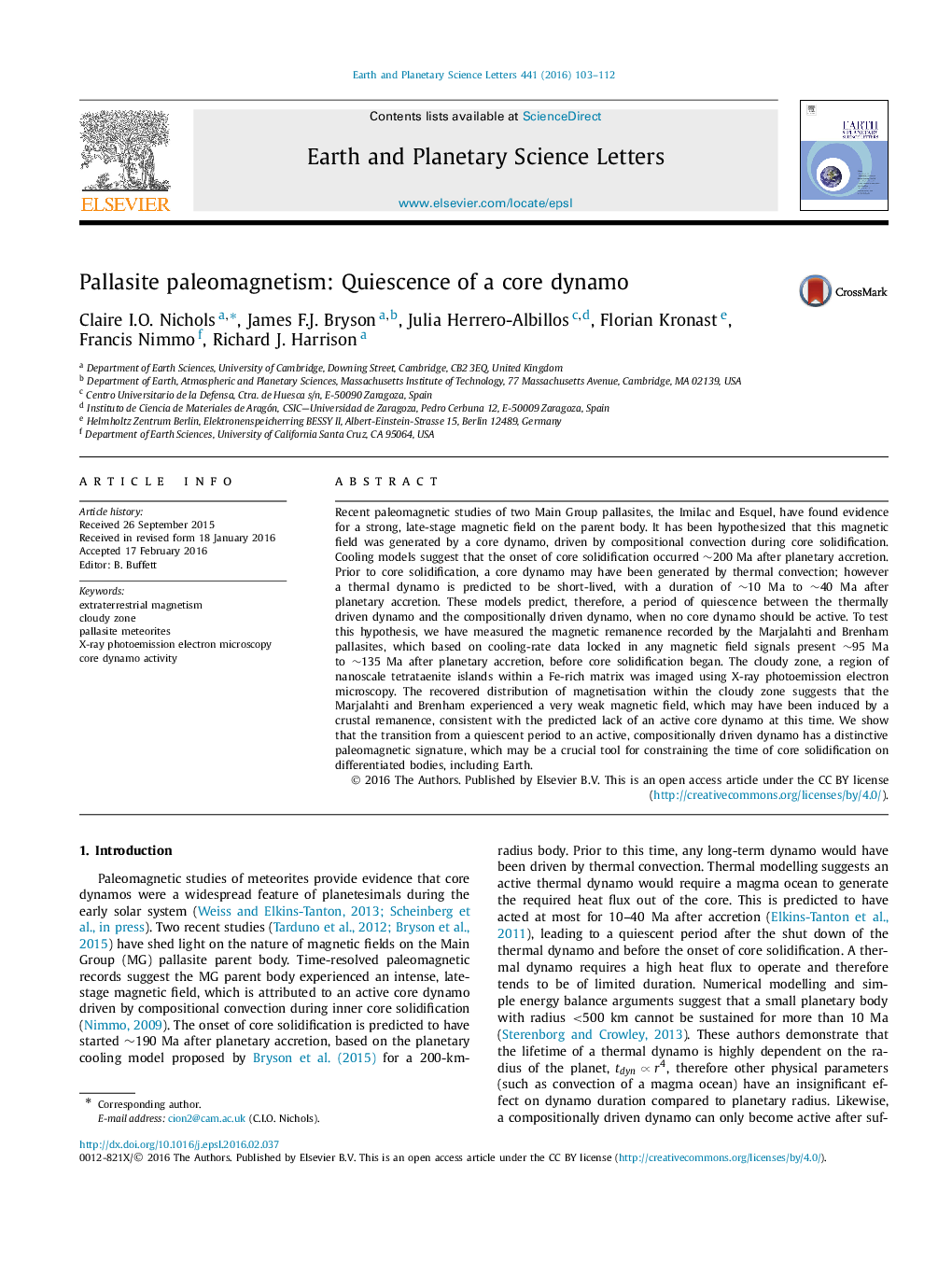| کد مقاله | کد نشریه | سال انتشار | مقاله انگلیسی | نسخه تمام متن |
|---|---|---|---|---|
| 6427518 | 1634715 | 2016 | 10 صفحه PDF | دانلود رایگان |
- We measured paleomagnetic signals recorded by 2 pallasites: Brenham and Marjalahti.
- The cloudy zone was measured using X-ray photoemission electron microscopy.
- Results show a period of no core dynamo activity prior to core solidification.
- Results suggest a distinct signal can be related to initial core solidification.
Recent paleomagnetic studies of two Main Group pallasites, the Imilac and Esquel, have found evidence for a strong, late-stage magnetic field on the parent body. It has been hypothesized that this magnetic field was generated by a core dynamo, driven by compositional convection during core solidification. Cooling models suggest that the onset of core solidification occurred â¼200 Ma after planetary accretion. Prior to core solidification, a core dynamo may have been generated by thermal convection; however a thermal dynamo is predicted to be short-lived, with a duration of â¼10 Ma to â¼40 Ma after planetary accretion. These models predict, therefore, a period of quiescence between the thermally driven dynamo and the compositionally driven dynamo, when no core dynamo should be active. To test this hypothesis, we have measured the magnetic remanence recorded by the Marjalahti and Brenham pallasites, which based on cooling-rate data locked in any magnetic field signals present â¼95 Ma to â¼135 Ma after planetary accretion, before core solidification began. The cloudy zone, a region of nanoscale tetrataenite islands within a Fe-rich matrix was imaged using X-ray photoemission electron microscopy. The recovered distribution of magnetisation within the cloudy zone suggests that the Marjalahti and Brenham experienced a very weak magnetic field, which may have been induced by a crustal remanence, consistent with the predicted lack of an active core dynamo at this time. We show that the transition from a quiescent period to an active, compositionally driven dynamo has a distinctive paleomagnetic signature, which may be a crucial tool for constraining the time of core solidification on differentiated bodies, including Earth.
Journal: Earth and Planetary Science Letters - Volume 441, 1 May 2016, Pages 103-112
